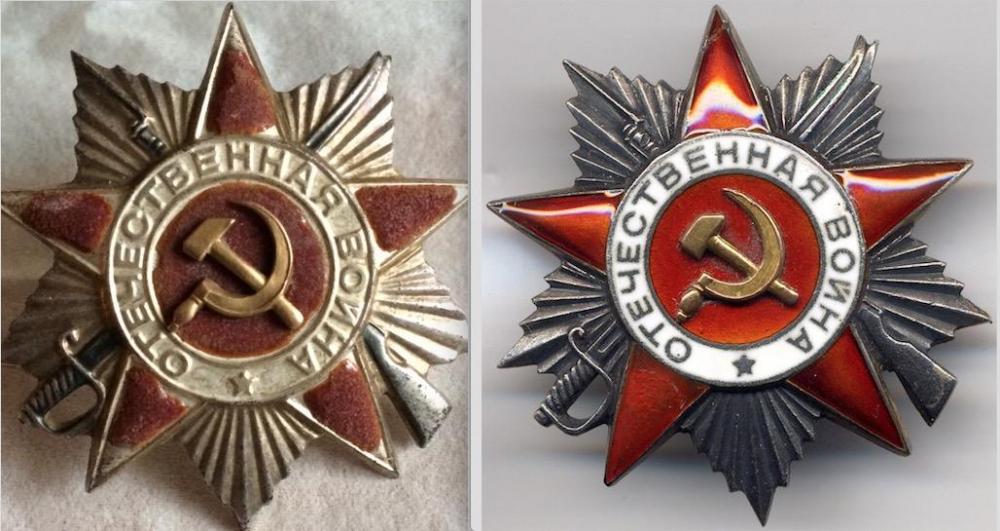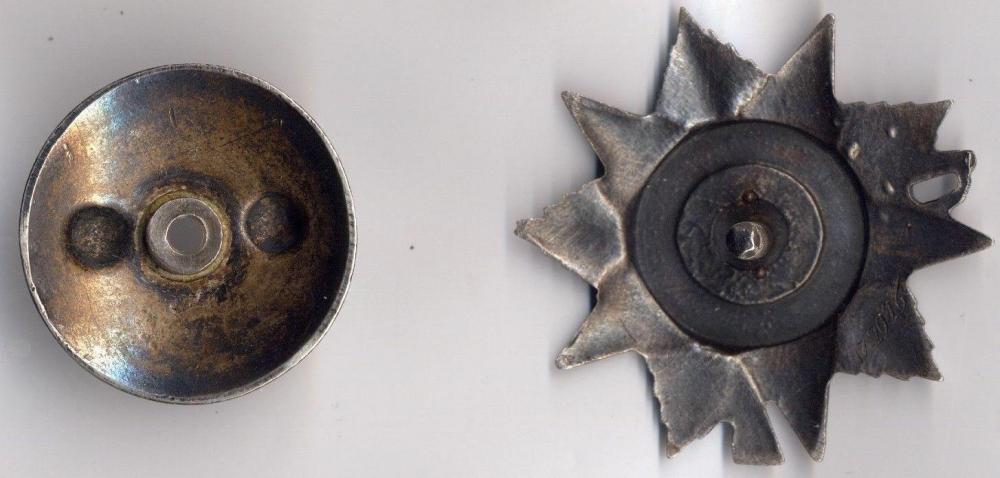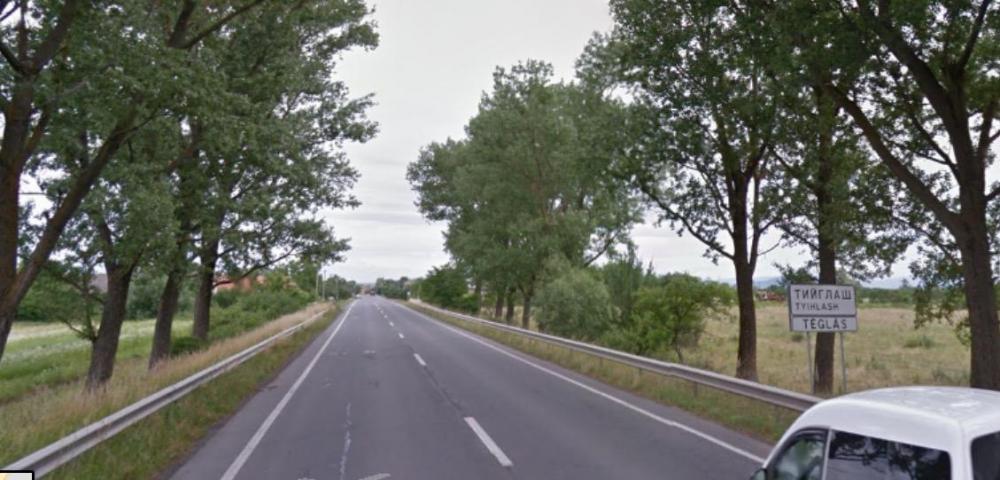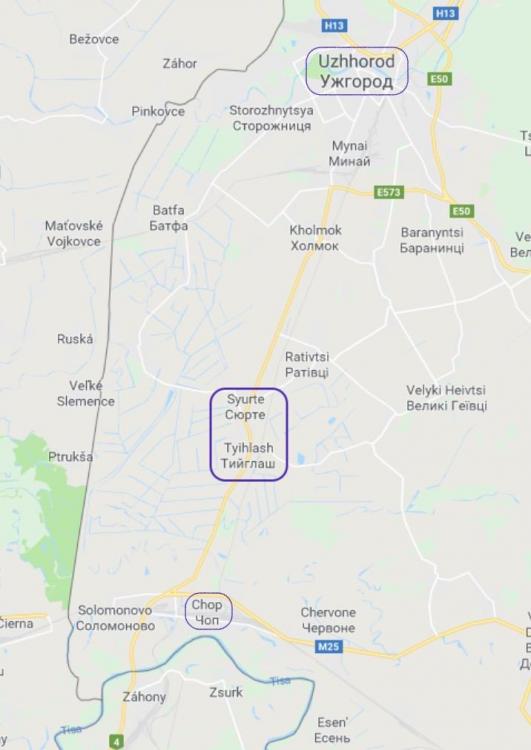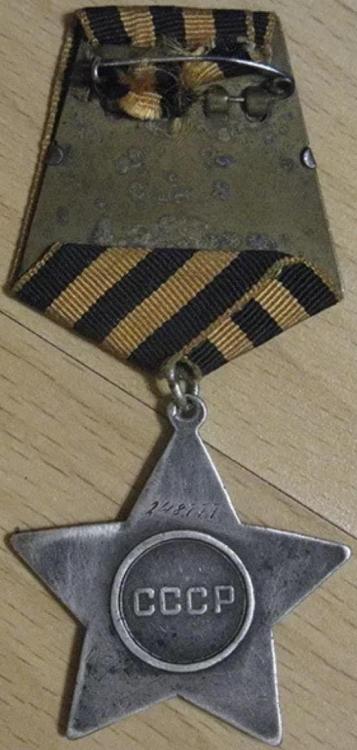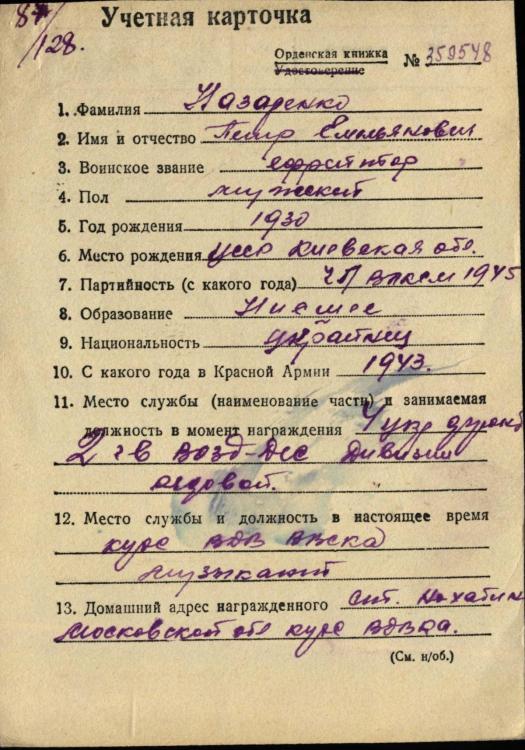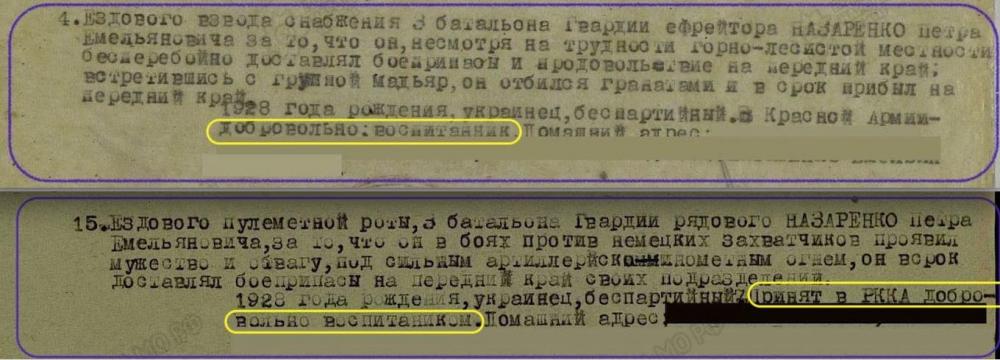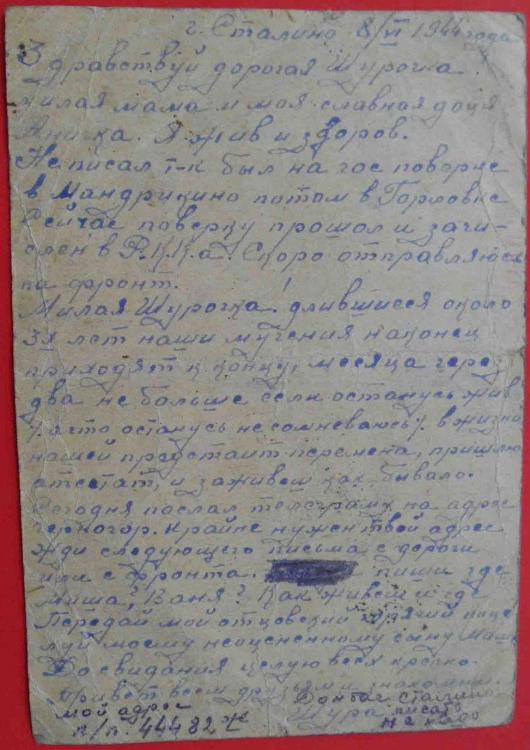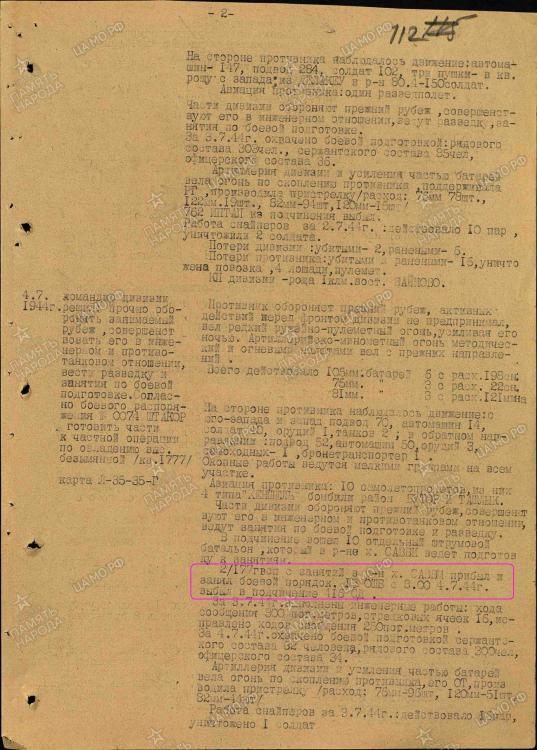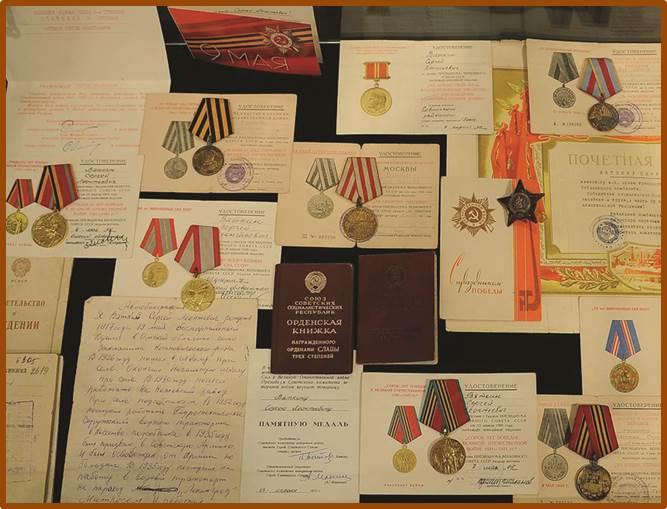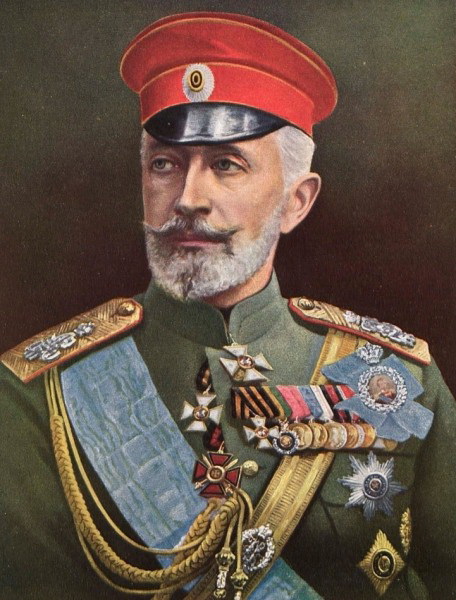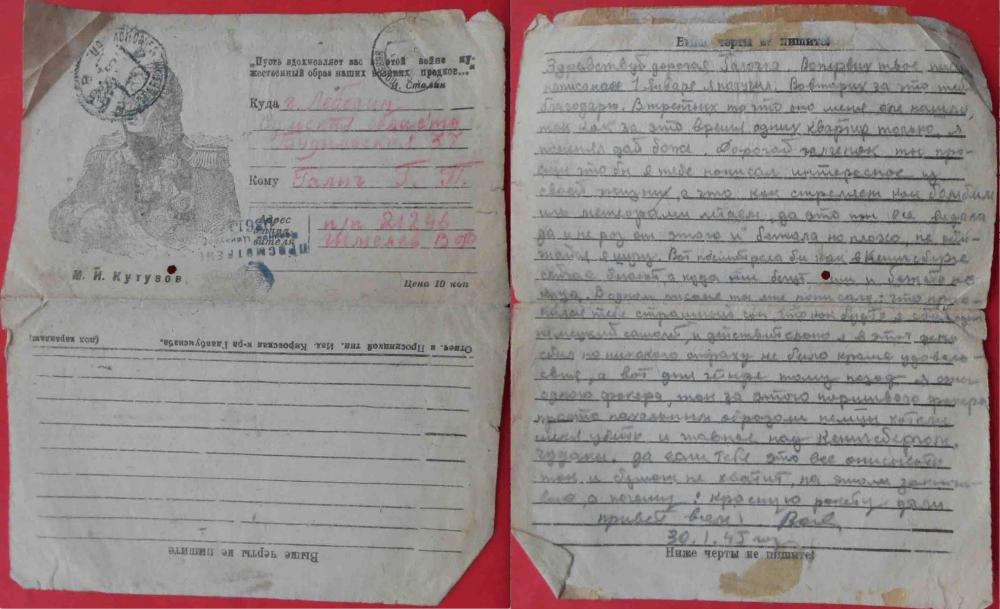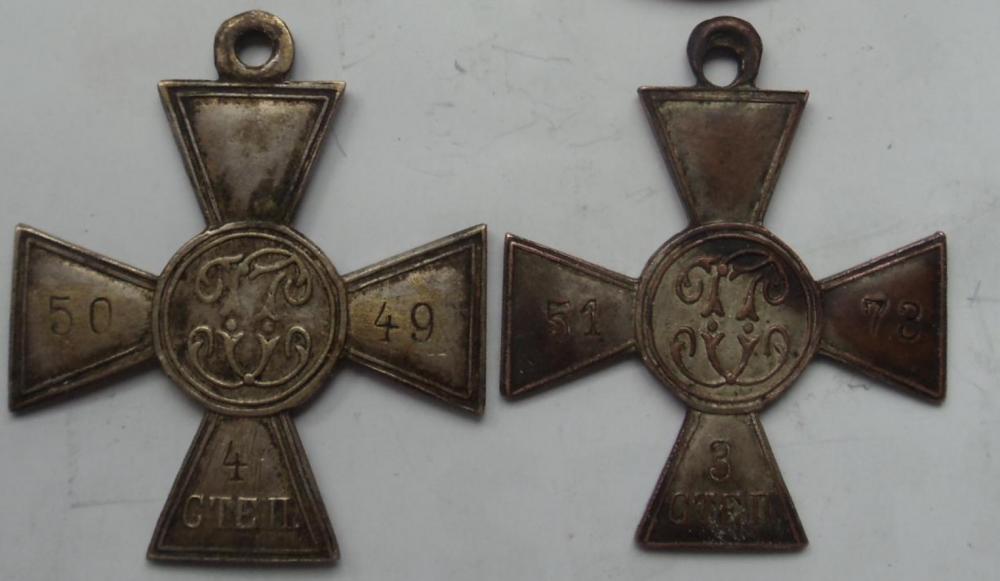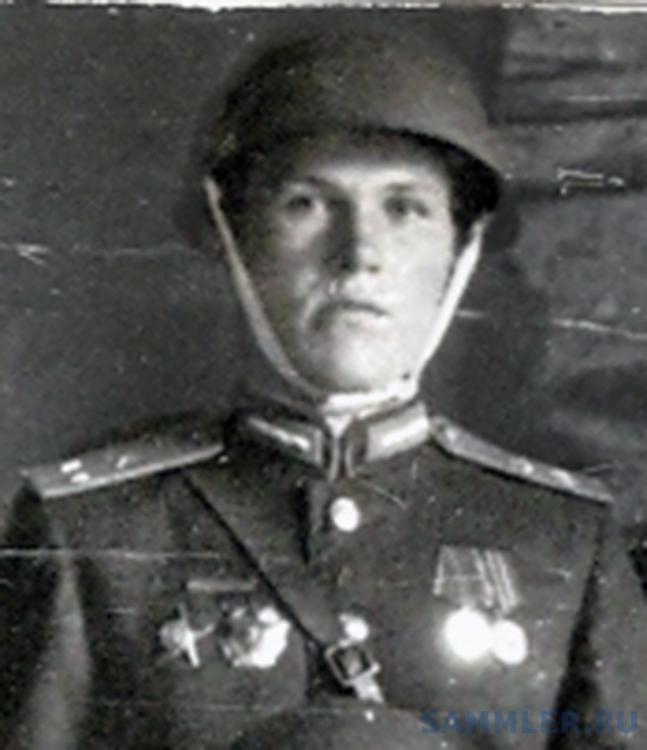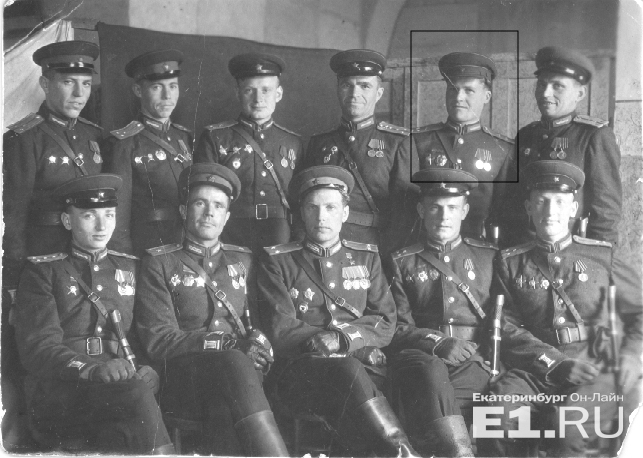-
Posts
533 -
Joined
-
Last visited
Content Type
Profiles
Forums
Blogs
Gallery
Events
Store
Everything posted by Egorka
-
No really... HE was shot down on 12 Feb 1953. I can try to see if can get some info on the actions on this day. Regarding his possible survival and subsequent transfer to USSR, I think there are people working on such cases: U.S.-Russia Joint Commission on POW/MIA Affairs (USRJC) https://sofrep.com/97178/renewed-us-russia-talks-focus-pow-mia-issues/ The Commission is organized into four working groups, each representing a key area of investigation. These groups encompass World War II; the Korean War; the Vietnam War; and the Cold War. "U.S.-Russia Joint Commission on POW/MIAs" official page with minutes of meeting: http://www.dpaa.mil/Resources/Fact-Sheets/Article-View/Article/569603/us-russia-joint-commission-on-powmias/
-
Hello, From what I know the overall MIG-15 and pilot losses of the Reds were: Soviets (64 air corps): 335 MIGs and 120 pilots killed (almost complete name and circumstance list exists). Chinese and North Coreans: 231 MIGs and 126 pilots killed. So the total of MIGa downed were 566 MIGs. Closer to the claimed 823, but still short of it. The point, that the gunners of the 19 Bomb Group could had shot either a Chinese or a N.Corean MIG is a good one, but I am not sure it's valid. From what I can see, on the 12 April, 1951, only the Soviet flew MIGs in that known interception mission. I am not 100% sure though. But so far all the account I have seen say so.
-
-
Hello, Before we can assess the situation with those 3 particular MIG-15 kills by aerial gunners mentioned in the document above, let’s see the total KW stats. Having benefit of passed time we can look back. Let’s see how many MIG-15 were claimed by ASAF and then how many were lost by the Soviets (64 air corps). Claims: According tho the page 20 of USAF stat digest 1953, there were claimed 823 MIGs in air-to-air during the whole war. Plus 145 probable, which we can disregard for now. Link: http://media.defense.gov/2011/Apr/05/2001329931/-1/-1/0/AFD-110405-030.pdf Soviet reports: The total losses of MIG-15 during the whole KW amounted to app. 335 MIGs. The data comes from 64 air corps reports, which is presented in the book “Red Devils Over the Yalu: A Chronicle of Soviet Aerial Operations in the Korean War 1950-53” by Igor Seidov. See, this overall stat alone means that there got to be overclaim, which is not unusual at all on any side. I read and translate Soviet WW2 citations and perfectly aware of this fenomena. Regarding these 3 claims on 12 April 1951, which is known as “ black Thursday”, I can repeat, that ZERO MIGs were lost beteen 9 and 22 of April. Now, a number of MIGs were indeed damaged, but not lost. But the citation from 19 bomber groups states clearly, that all three claimed MIGs crushed in flames. None the less, very interesting action, award and the veteran!!!
-
Great group! Great veteran!
-
Interesting. Though there were no MIG-15 lost on 12 April 1951. The closest losses were on 9 and 22 of April 1951. Both downed by F-86.
-
Hello! Please, meet sr.lt. VOROSCHENKO Maksim Ivanovich, 1916, former company commander 1177 rifle regiment, 377 rifle "Melitopol" division. After sustaining severe through and through chest wound in March 1944 moved to the reserve officer regiment of 4 Ukrainian front. The OPWII is awarded after his wound . Citation is signed in June 1944. By October 1944 , he is back in line as a company commander of 896 rifle regiment, 211 rifle division. Note the condition on the photos. More details are to follow...
-
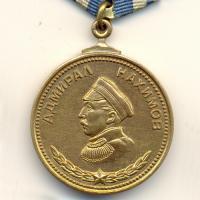
OGIII for a regiments son
Egorka replied to Egorka's topic in USSR: Soviet Orders, Medals & Decorations
During his service from February 1944, NAZARENKO was bestowed medal "For Combat Merits", medal "For Bravery", and the last one - Order of Glory III class. Recommendation for OGIII was signed 12 January 1945. Though it is not mentioned directly, the described events took place on app. 20 October 1944. "Comrade NAZARENKO, being a horse wagon driver of the supply platoon, has exhibited courage and valour in the fight against the Germano-Fascist invaders. Risking his life under enemy fire, he timely delivered ammunition to the rifle companies on the first line. When during the assault on the village Syurte, Chzechoslovakia, occurred lack of ammunition, he hand carried and successfully delivered cartridges to the rifle company, while being under enemy rifle-MG fire. Having been resupplied, the company continued the assault and comrade NAZARENKO steadfastly went with the company into the attack. In the village Kisteglas, the enemy suddenly opened fire from inside a house. Comrade NAZARENKO secretly following a ditch approached the house and fired the windows. Confusion struck the enemy and they started running out of the door, where they were met NAZARENKO’s well placed shots. In this engagement, he killed 6 Hungarians and 2 captured prisoner. For exhibited courage and valour he is worthy of order Glory III class." You can see the position of the 7 Guards paratrooper rifle regiment on 20 October 1944 , just South of Kesteglash (green marker). Small town Syurte is located half way between towns Uzhgorod and Chop. In the citation these historically Hungarian settlements are named as located in Czechoslovakia. That was correct for the period 1920 - 1945. But today they are both located just East of the Ukrainian state border. In Sommer 1945, Stalin insisted on the local railway junction Chop with it's area (250 square km) being exchanged with Czechoslovakia for another piece of land. -
Please, meet Guards private first class NAZARENKO PETR EMELIANOVICH, who served as a horse carriage driver of 3 battalion, 7 Guards paratrooper rifle regiment, 2 Guards paratrooper "Proskurov" division. Awarded OGIII #248777 for an action near settlements SYURTE and KISTEGLAS on 20 November 1944. The veterans birth year is recorded as 1928 in the citations, but as 1930 in the awards register card signed after the war. NAZARENKO's status is described as "volunteer: pupil" in his 2 first award recommendations. Such was the designation used during the war time for what later became known as "regiments son/daughter". The name "regiments son" was popularised from 1945 by the novel "Regiments son" written by Valentin Kataev. This means, that NAZARENKO added up 2 years to his age to get accepted to the regiment. I am quite sure, that he was infact born in 1930 and thus was barely 14 y.o. in 1944 (he joined the army in February 1944). According to the official data, there were app. 3500 of such regiments sons and daughters. The description of NAZARENKO's feats will come in the next post.
-
The brass plaque is a kind of award. It reads: "For Warsaw 25th and 26th August / year 1831"
-

My Prisoner of War Collection
Egorka replied to POWCollector's topic in Great Britain: Orders, Gallantry, Campaign Medals
As always brilliant material. Thank you for sharing!!! N.B. Driven by both inspiration and jealousy I too will open a thread on Soviet POW awards soon. Not as extensive as your but still... -

Partisan & Lake Hasan Grouping
Egorka replied to sftrooper86's topic in USSR: Soviet Orders, Medals & Decorations
Thank you! Sorry to be negative, but I remain to be sceptical... The Khasan ID: the font doesn't match the good examples, it looks like modern PC font; none of the signatures are present (there should two facsimiles and one signature on this document). The temporary ID for the partisan medal: more questions, than answers. I think the whole thing is built around the original Communist party ID to create a perception of a group. Sorry... I would be glad if proved to be wrong. There are some very knowledgeable people on this forum, so maybe they can correct me. -

Partisan & Lake Hasan Grouping
Egorka replied to sftrooper86's topic in USSR: Soviet Orders, Medals & Decorations
Much better. Could you, please, scan the Khasan document as well? The is temporary document proving bestowal with Partisan medal I class... The left upper corner reads: "Peoples Commissariat of Defence USSR // Ukrainian HQ of Partisan movement // "5" May 1943 // #27" The documents body reads: "TEMPORARY CERTIFICATE // The person presenting this document is the commander of the demolition squad of partisan unit "MSTITEL' ", PIROG ANDREJ FEDOROVICH has been awarded with medal "Partisan of Patriotic war" I class for courage and bravery exhibited in the partisan struggle against the Germano-Fascist invaders. HEAD OF UKRAINIAN HQ FOR PARTISAN MOVEMENT // LT.-GENERAL signature T.STROKACH" -

Partisan & Lake Hasan Grouping
Egorka replied to sftrooper86's topic in USSR: Soviet Orders, Medals & Decorations
Interesting. Do you need translation? But could you, please, post large photo/scan. It is a little difficult to read. -

Partisan & Lake Hasan Grouping
Egorka replied to sftrooper86's topic in USSR: Soviet Orders, Medals & Decorations
Hello! The first red ID book is for the Khasan lake badge. The second ID is his Communist party membership ID issued in 1973, which states he was the party member since 1920. His name is PIROG ANDREJ FEDOROVICH, born 1902. PIROG means cake in Russian. In my humble opinon, the first ID for Khasan lake incident is forged. I say due to 2 reasons: firstly, based on the looks of it and secondly, because PIROG was in service 1923-1925 and from 1941 (so doesn’t cover 1938). The available data does not to conclude with 100% certainty, but nothing indicates he was eligible for a partisan medal. At least ffrom August 1942, PIROG was a political comissar assigned to a front level medical directorate, i.e. far from being a partisan. He continued on similar position thoughout the war and was awarded Red Star and Patriotic war I class. So I think, this is a set of items, which were put together to resemble a group related to one person. -
Please meet technic-intendant 2 class ROSS ALEKSANDER IVANOVICH, born 1904 in town Nikolaev (Ukraine). The veteran wrote this letter on 08 June 1944 to his wife, who resided in Kiev at the time. If you read the letter you will see the intrigue. town Stalino, 08/VI/1944 Greetings my dear Shurochka (wife's name), my dear mother and my lovely daughter Annushka. I am alive and well. I didn't write you because I was on the state clearance, first in the village Mandrikino, then in village Gorlovka. Now I have passed the state clearance and assigned to the ranks of RKKA. Soon I am leaving for the front. Dear Shurochka! Our 3 year long suffering and turmoil are soon to end. Not more, than in a couple of months, if I survive (I am not in doubt I will) our lives will turn to the better - I will send you my soldiers provisions attest and the live will be as it used to. I sent a teletype letter to Mrs.Chernogor today. I need your address. Expect my next letter either from the front or from transit. Write me where is Misha and Vanya? How are you living and where? Pass my loving fatherly kiss to my precious son Misha. Good bye. Kisses to all of you. Greetings to all the friends and neighbors. Donbass, town Stalino. My address: fieldpost 44482 Ж. Aleksander (please, don't write me) The letter was written right after ROSS successfully passed through the filtration camp, because he was living on the German occupied territory from August 1941 until December 1943. He was in service since February 1936. In June 1941 he was the head of supply train of the 19 Howitzer Artillery Regiment, which was located close to the state border when Germany attacked. His unit quickly found itself to be behind the front line. As many others in such situation he was declared MIA: But ROSS survived. It also appears to me, he evaded being captured by Germans (i.e. he was not a POW), but managed to get shelter somewhere and live his live through 1941-1942-1943. I don't know exactly how. Maybe he managed to get to his home town Nikolaev or he just settled somewhere quiet in the countryside (another common survival scenario during that period). So by June 1944 he was cleared, i.e. no fact of collaboration with Germans were found on him. Despite the fact, that formally all these cleared men (and there were many of them) were not found guilty of any crimes, they had to take a 2 months shift in an Assault units - detached assault battalion&company. 2 months or until wounded. Or killed. So ROSS was on his way to 13 detached assault battalion, where he arrived on 12 July 1944. The 13 detached assault battalion existed from 20.06 till 01.10.1944. It was moved a lot between the rifle units, and it seems after 04.07.1944 it was assigned to 416 rifle division (32 rifle corps, 5 shock army, Southern front). The further fate of the veteran is not 100% clear to me. I don't see any direct and specific KIA report. But his award record is not in the archive and nothing else positive can be found either... So I am fearing the worst... But this is not the end. It gets even worse... It appears , that ROSS' son Misha - Mikhail Aleksandrovich ROSS, born 1925 in town Nikolaev, was KIA on 14 January 1945. He served from Summer 1944 first as a rifleman in 358 rifle regiment, 136 rifle division. Awarded Bravery medal in October 1944. By January 1945 he was a MG section leader.
-

What say you? Three Digit Red Star
Egorka replied to Stormrider59's topic in USSR: Soviet Orders, Medals & Decorations
Hello! I hope you did not bid on it, did you? I have my doubts. I have never held one in my hands , so it is a bit theoretical. But consider this: The averse center medallion looks like it was hand made. The outer edge rim is missing completely, plus the overall misalignment of the elements (f.ex. soldiers head tip and letter "C"). The hammer and sickle looks off to me too... The reverse is not giving me right impression. It feels more like a "normal" star was converted into something to resemble this early batch. These early stars feel like they are inflated with air. I just don't see it in this badge. So I would stay clear of it. -
And some more information has come up. Please, meet pilot SHMELEV. SHMELEV was shot down in 26 August 1942 (light head wound in the plane crash) and was kept POW in town Pyatigorsk (North Caucasus region) until his escape in November 1942. Then NKVD special clearance camp for ex POW. After that one some rear positions (not clear if due to health reasons or due to him being ex-POW). But in October 1944 he is again back to his original unit - 805 fighter aviation regiment. Retired as deputy regiment commander in the rank of lt.-colonel in 1955. POW record:
-

Have you ever seen something alike? Tsar Nicholas II letter clip
Egorka replied to Stuka f's topic in Russia: Imperial
-
A letter written from Sr. Lt. SHMELEV VASILIJ FILIPOVICH, 1918, to his girlfriend in January 1945. "Hello dear Galochka. First, I let you know, that I received your letter, which you wrote on 1 January 1945. Secondly, I thank you for it. Your letter has barely reached me, as I have changed a lot of address lately. Dear little Galochka, you ask me to write you about interesting episodes from my life, how weapons fire, how we bomb, and how we fly like meteors. You have seen all that many times, and wanted to escape that. But not good enough. No offense, just kidding. If you could only see how they run about in Koenigsberg, but there is no way to go. In one of the letters you wrote about your nightmare, in which I shot down a German plane. And really, I did shot down one plane on that day. But I had no fear, only satisfaction. And about 4 days ago I set ablaze a Focker plane. And for that one lousy Focker the Germans wanted to kill me over Koenigsberg. Such nuts! I have not enough paper to explain all that now in details. I conclude the letter, and you know why? Because of the red signal flare! Greetings to everyone. Vasilij 30 January 1945" Sr.Lt. SHMELEV served in 809 Fighter Aviation Regiment and conducted 229 combat sorties during the war. He had 6 air victories and 3 destroyed planes on the ground. On May 1945 he was awarded with "Aleksander Nevsky" order # 26891.
-

mperial Russian St George Cross 3th Class
Egorka replied to Anna_M's topic in USSR: Soviet Orders, Medals & Decorations
Hello, I cannot comment about originality of this specific item. But if this should be aa good one, then it St. George cross issued by so called Don Republic in the period 1918-1921 ( https://en.wikipedia.org/wiki/Don_Republic ). The actual attribution to Don Republic is actually debatable, but that is how these crosses are called. St. George on these looks more like a cossack. The quality of the Don Republic crosses is usually low and variable. So this fits to the sample you show here. Here are a couple of examples.


